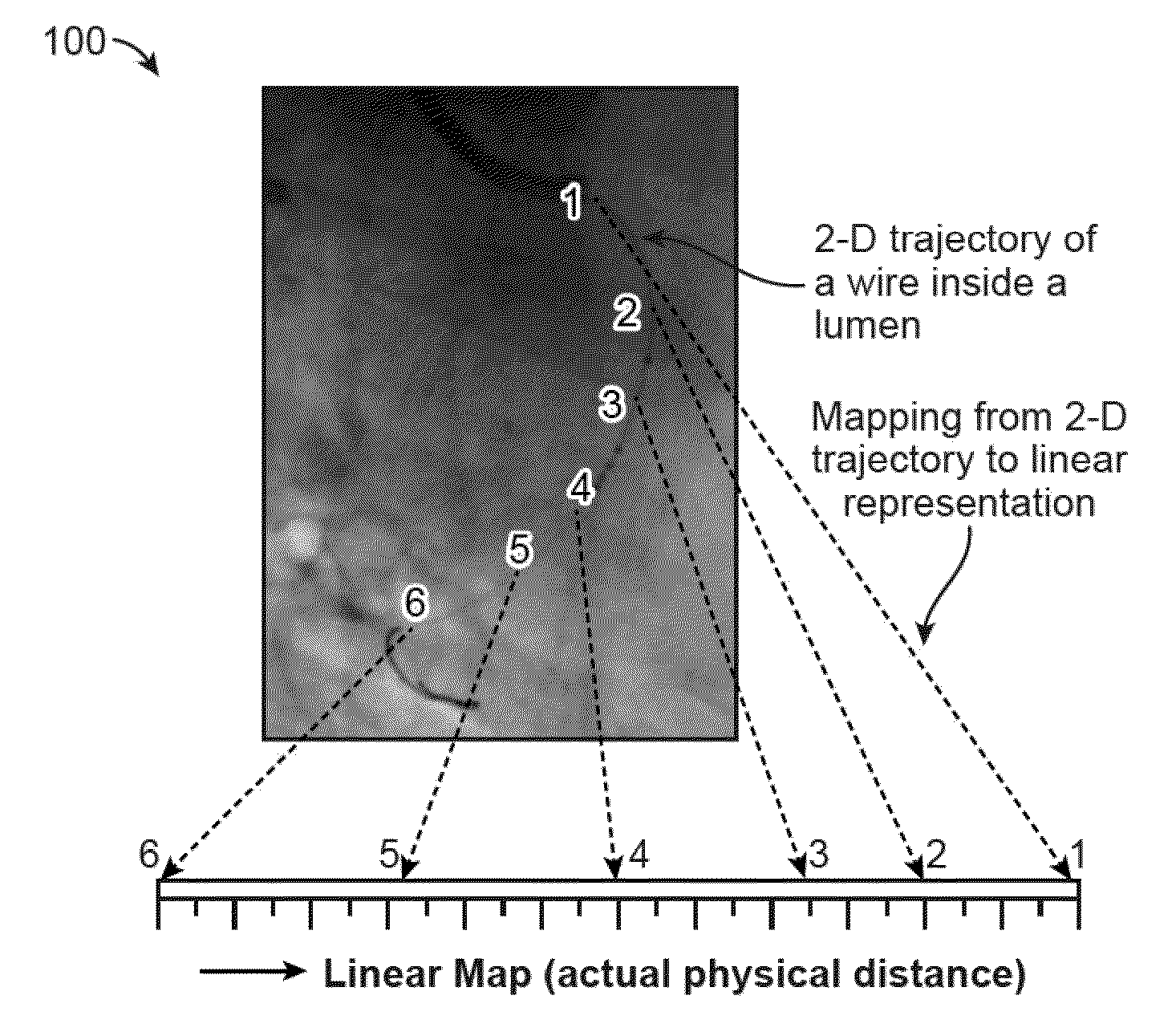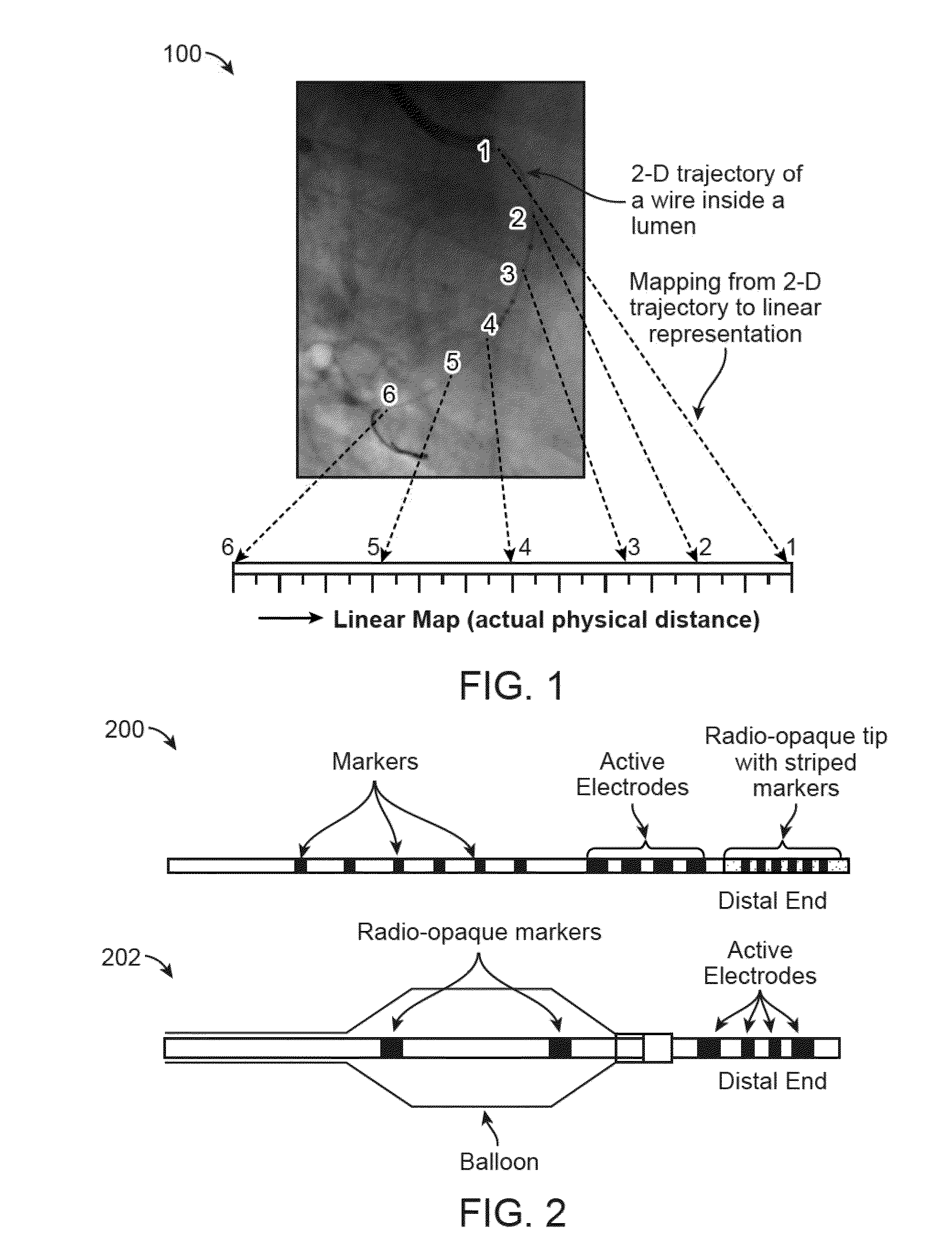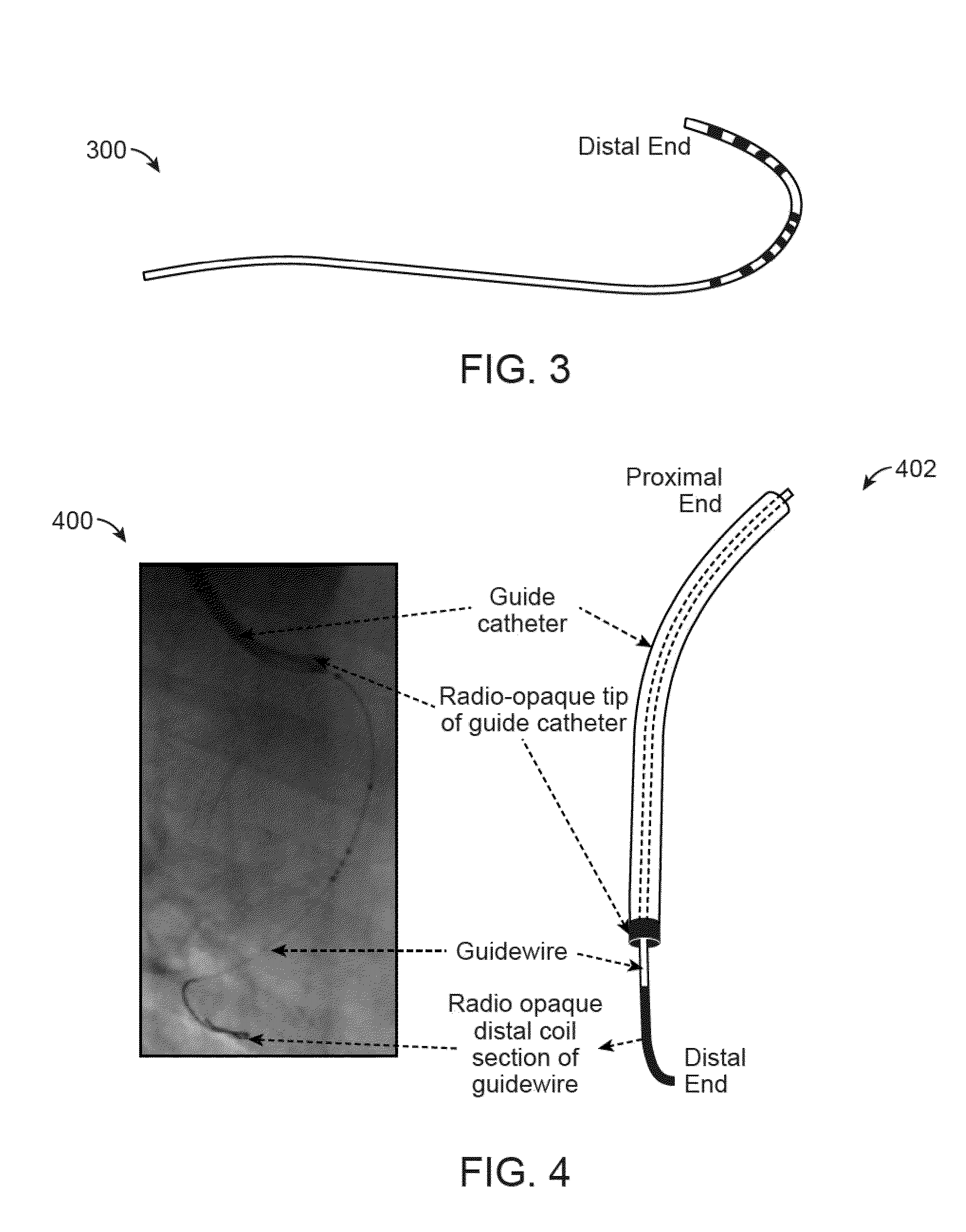Systems for detecting and tracking of objects and co-registration
- Summary
- Abstract
- Description
- Claims
- Application Information
AI Technical Summary
Benefits of technology
Problems solved by technology
Method used
Image
Examples
Embodiment Construction
[0071]Here we describe methods to process the 2-D images to arrive at a linearized representation of a lumen of a moving organ. Illustrations of the proposed methods are shown for intervention of the coronary artery. A linear map is a mapping from a point on the curved trajectory of a lumen (or the wire inserted into the lumen) to actual linear distance measured from a reference point. This is shown in the schematic 100 in FIG. 1.
[0072]Many cardiac procedures involve the insertion of a lumen assessment device such as IVUS, OCT and LFR (see e.g., U.S. Pat. No. 8,374,689 B2 which is incorporated herein by reference in its entirety and for any purpose). In most of these cases, there is a need to co-register the position of the assessment device on a previously captured X-ray image that is usually also an angiographic image. This reference image is typically also used by the physician during a possible following intervention procedure such as angioplasty and stent deployment. A correct ...
PUM
 Login to View More
Login to View More Abstract
Description
Claims
Application Information
 Login to View More
Login to View More - R&D
- Intellectual Property
- Life Sciences
- Materials
- Tech Scout
- Unparalleled Data Quality
- Higher Quality Content
- 60% Fewer Hallucinations
Browse by: Latest US Patents, China's latest patents, Technical Efficacy Thesaurus, Application Domain, Technology Topic, Popular Technical Reports.
© 2025 PatSnap. All rights reserved.Legal|Privacy policy|Modern Slavery Act Transparency Statement|Sitemap|About US| Contact US: help@patsnap.com



